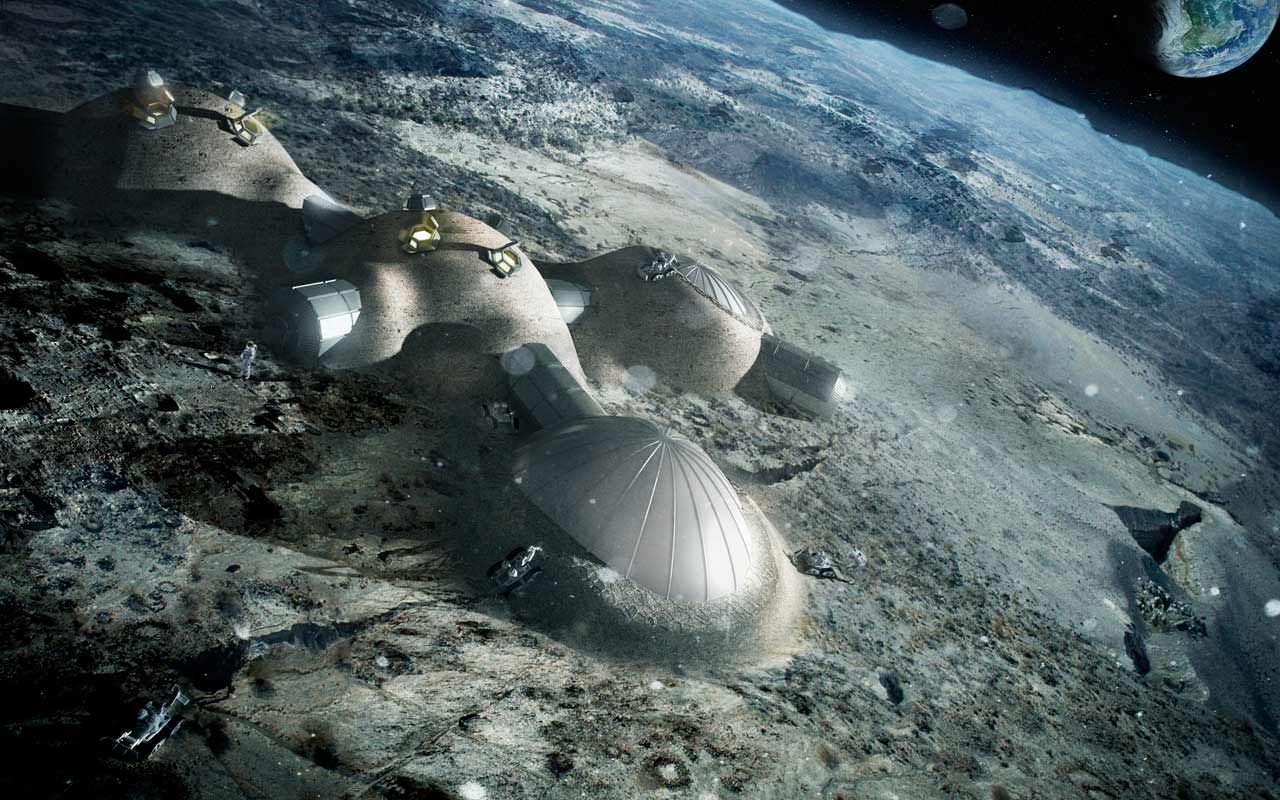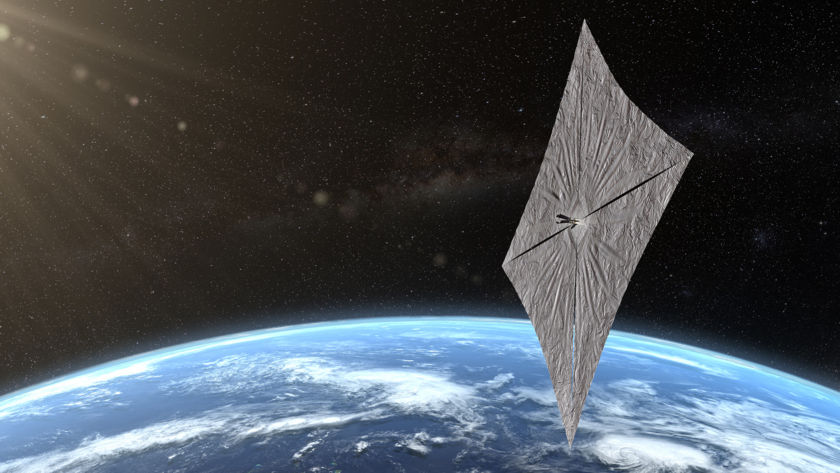Black holes are notoriously destructive to stars near them. Astronomers often see flashes representing the death throes of stars collapsing past the event horizon, a black hole they got too close to. However, in rare instances, a star isn’t wholly swallowed by its gigantic neighbor and is pulled into an orbit, causing a much slower death, which would probably be more painful if stars could feel anything. A new study using X-ray results from Chandra and some other instruments details a supermassive black hole at the center of a galaxy far, far away that is slowly devouring a star it has captured in an orbit, and it could teach them more about a variety of interest physical processes.
Continue reading “We Know When a Black Hole Will Have its Next Feast”Galaxies in Dense Environments Get Larger

Galaxies are some of the largest clearly defined structures in space. There are trillions of them, and many are clustered around each other. But how does that clustering affect them? That’s been a question for a while, and older papers have yielded contradictory results. Now, a new paper analyzing millions of galaxies from researchers at the University of Washington, Yale, and several other institutions shows a clear pattern that had been debated before – galaxies surrounded by other galaxies tend to be larger.
Continue reading “Galaxies in Dense Environments Get Larger”Specialized Materials Could Passively Control the Internal Temperature of Space Habitats

Areas of space have wildly different temperatures depending on whether they are directly in sunlight or not. For example, temperatures on the Moon can range from 121 °C during the lunar “day” (which lasts for two weeks), then drop down to -133 °C at night, encompassing a 250 °C swing. Stabilizing the temperature inside a habitat in those environments would require heating and cooling on a scale never before conducted on Earth. But what if there was a way to ease the burden of those temperature swings? Phase change materials (PCMs) might be the answer, according to a new paper from researchers at the Universidad Politecnica de Madrid.
Continue reading “Specialized Materials Could Passively Control the Internal Temperature of Space Habitats”Webb Relieves the Hubble Tension
Sometimes, when scientists measure things differently, they get different results. Whenever that happens with something as crucial to humanity’s long-term future as the universe’s expansion rate, it can draw much attention. Scientists have thought for decades that there has been such a difference, known as the Hubble Tension, in measurements of the speed at which the universe is expanding. However, a new paper by researchers at the University of Chicago and the Carnegie Institution for Science using data from the James Webb Space Telescope (JWST) suggests that there wasn’t any difference at all.
Continue reading “Webb Relieves the Hubble Tension”Project Helianthus – a Solar Sail Driven Geomagnetic Storm Tracker

Solar storms captured the imagination of much of the American public earlier this year when auroras were visible well south of their typical northern areas. As the Sun ramps into another solar cycle, those storms will become more and more common, and the dangers they present to Earth’s infrastructure will continue to increase. Currently, most of our early warning systems only give us a few minutes warning about a potentially destructive impending geomagnetic storm event. So a team of researchers from Sapienza University in Rome and the Italian Space Agency proposed a plan to sail a series of detectors to a point out in space where they could give us an early warning. And they want those detectors to stay on station without rockets.
Continue reading “Project Helianthus – a Solar Sail Driven Geomagnetic Storm Tracker”Researchers Developed a Test Bed For Separating Valuable Material on the Moon
Many times, it’s better to flesh out technologies fully on Earth’s surface before they’re used in space. That is doubly true if that technology is part of the critical infrastructure keeping astronauts alive on the Moon. Since that infrastructure will undoubtedly use in-situ resources – known as in-situ resource utilization (ISRU) – developing test beds here on Earth for those ISRU processes is critical to derisking the technologies before they’re used on a mission. That’s the plan with a test bed designed by researchers at the German Aerospace Center in Bremen – they designed it to improve how well we gather water and oxygen from lunar regolith. Unfortunately, as their work described in a recent paper demonstrates, it will be a challenge to do so.
Continue reading “Researchers Developed a Test Bed For Separating Valuable Material on the Moon”A Hopper Could Explore Over 150km of Triton’s Surface In Two Years
Neptune’s largest moon, Triton, is one of the most biologically interesting places in the solar system. Despite being hard to reach, it appears to have active volcanoes, a thin atmosphere, and even some organic molecules called tholins on its surface. However, Voyager only visited it once, in passing, 35 years ago. Technology has advanced a lot in the intervening decades, and a new push for a lander on Triton specifically has been garnering attention. One such mission was described by Steve Oleson and Geoffrey Landis of NASA’s Glenn Research Center. Their concept mission, known as Triton Hopper, was funded by NASA’s Institute for Advanced Concepts (NIAC) back in 2018 and utilized a cryogenic pump to extract propellant from Triton’s surface to power a “hopper” that could travel up to 5 km a month, and do some fascinating science along the way.
Continue reading “A Hopper Could Explore Over 150km of Triton’s Surface In Two Years”Are Andromeda and the Milky Way Doomed to Collide? Maybe Not
Scientists discovered the Andromeda galaxy, known as M31, hundreds of years ago, and around a century ago, we realized that it had negative radial velocity toward the Milky Way. In other words, eventually, the two galaxies would merge spectacularly. That has been common knowledge for astronomers since then, but is it really true? A new paper from researchers at the University of Helsinki looks at several confounding factors, including the gravitational influence of other galaxies in our local group, and finds only a 50% chance that the Milky Way will merge with the Andromeda galaxy in the next 10 billion years.
Continue reading “Are Andromeda and the Milky Way Doomed to Collide? Maybe Not”Astronomers Use Artificial Intelligence To Find Elusive Stars “Gobbling Up” Planets
We recently reported on how the mountains of data produced by astronomical instruments are “perfect for AI.” We’ve also started reporting on several use cases for different AI algorithms. Now, a team of researchers from the University of Texas has developed a new use case that focuses on discovering the interior makeup of exoplanets by looking at a specific type of star.
Continue reading “Astronomers Use Artificial Intelligence To Find Elusive Stars “Gobbling Up” Planets”A Tower On The Moon Could Provide Astronauts With Light, Power, and Guidance
Technologies for enabling NASA’s Artemis mission are coming thick and fast, as plenty of problems must be solved before a permanent human presence on the Moon can be established. A novel idea from Honeybee Robotics, one of the most prominent space technology companies now owned by Blue Origin, could solve plenty of them with one piece of infrastructure. The Lunar Utility Navigation with Advanced Remote Sensing and Autonomous Beaming for Energy Redistribution, or LUNARSABER (which must have been named by someone who really likes Star Wars), is a 100m tall pole that can hold one ton of equipment on top of it. It could serve as a central power, communications, and lighting hub of an Artemis base and part of a mesh network with other places of interest on the Lunar surface.
Continue reading “A Tower On The Moon Could Provide Astronauts With Light, Power, and Guidance”






